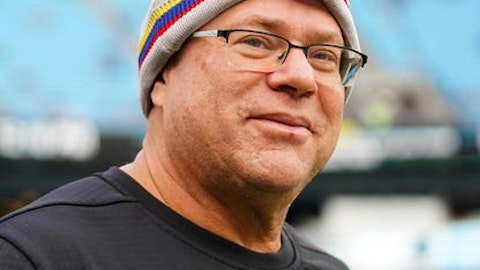Tony Spring: And I would just add that the work the team has done to have more transitional products and even in a quarter where the weather was a little warmer than we would have liked, we saw a great sweater selling. So, that’s one of the things we’ve come to accept is we don’t control the weather, but we can diversify our assortments to take advantage of opportunities for gift-giving and self-purchase.
Adrian Mitchell: The only other thing I would add is to your question about student loan repayments, it’s really difficult to determine the specific impacts due to student loan payments. But as we think about the 2023 outlook for the balance of the year and the fourth quarter, that’s very much reflected in our outlook, and also incorporates the variable of student loans. This would be a pretty important consideration as we get into 2024 as well, but we’re just continuing to monitor it pretty closely.
Greg Sommer: Great. Thank you.
Adrian Mitchell: Thank you.
Operator: Thank you. The next question is coming from Alex Straton of Morgan Stanley. Please go ahead.
Alex Straton: Perfect. Thanks so much for taking the question. And Jeff, congrats on a great career at Macy’s. It’s been great getting to work with you. Really just a couple from me. First, I think you highlighted Backstage and Bloomie’s outlet as outperforming the full-line this quarter. I was just wondering, has that been the case for some time, or was there some sort of step change this quarter that you’d highlight, as well as just how you’re thinking about those banners heading into holiday? And then secondly, many wholesalers have trimmed their order book outlooks from three months ago in their latest earnings reports, citing weaker partner orders. Is there anything you can share even qualitative on how you’re ordering or thinking about the front-half inventory buys? Thanks a lot.
Tony Spring: Thanks, Alex, for the question. We feel good about the business at both Backstage and Bloomingdale’s outlets. There isn’t a quarterly change because they’ve been performing all year long. I think it speaks to the value-conscious consumer, and we’re glad that we have both of these nameplates having an offering in the sector. In the case of Backstage, it’s inside of our four-wall stores and we know that the Backstage customer is also a full-line customer, so bringing them in for value gives us the opportunity, certainly as you look at the fourth quarter, to sell them other gifts in size and color and in breadth and variety that we wouldn’t have necessarily in a freestanding store. And conversely at Bloomingdale’s, you’re providing access to a brand that I think is on the upswing.
And there is still a consumer I think that at times is price sensitive. So, how do we cater to that customer and ultimately bring them over to the full price brand at the appropriate point in time. So, we feel good about both Backstage and Bloomingdale’s off-price. Just I guess in follow-up to the second part of your question, we intend to be the better wholesale partner out there. And when I say wholesale partner, that doesn’t mean that we won’t have a concession relationship, a consignment relationship, or a hybrid relationship, our objective is to have the best relationship. We don’t view it as a zero-sum game. And while there are going to be times where we are adding orders and canceling orders, we try to do it with great transparency. And what I found is our partners appreciate our willingness to forecast with them and talk about our future objectives.
As Adrian said, our commitment is to get the low single-digit growth next year, which means we need brand partners in the wholesale market who are betting on both Macy’s and Bloomingdale’s.
Alex Straton: Thanks a lot. Good luck.
Tony Spring: Thank you.
Operator: Thank you. The next question is coming from Dana Telsey of Telsey Advisory Group. Please go ahead.
Dana Telsey: Good morning. And, Jeff, best of luck. As you think about Tony and Adrian, the opportunities on the real estate side, you’ve obviously had some — a small — just a short time period of the small-format stores. But as you think of the landscape opportunity for Bloomingdale’s and for Macy’s and what the assortment could look like, how do you envision it? What does it mean for margins? And just in the near term, if you think about the first half of 2024, does the cadence of orders or how you’re thinking about the ordering patterns, do they change at all from the back half of 2023? Thank you.
Jeff Gennette: Yeah, let me take the first part of your question, which would be on the real estate side. So, obviously, Dana, we look at our portfolio very closely and what’s the value to operate a particular unit, what’s the monetization opportunity with that. The thing that you’re hearing from us is really taking a full market view and really looking at all of our assets that serve customers in the market. And that’s our digital assets, that’s our mall-based assets, as well as this emerging opportunity that we see in small-door format. So, when you look at the Macy’s brand is in 49 of the Top 50 metro markets. So from that perspective, we’re well-placed. There’s always opportunities to look at individual units and expect that we’ll continue to do that.




